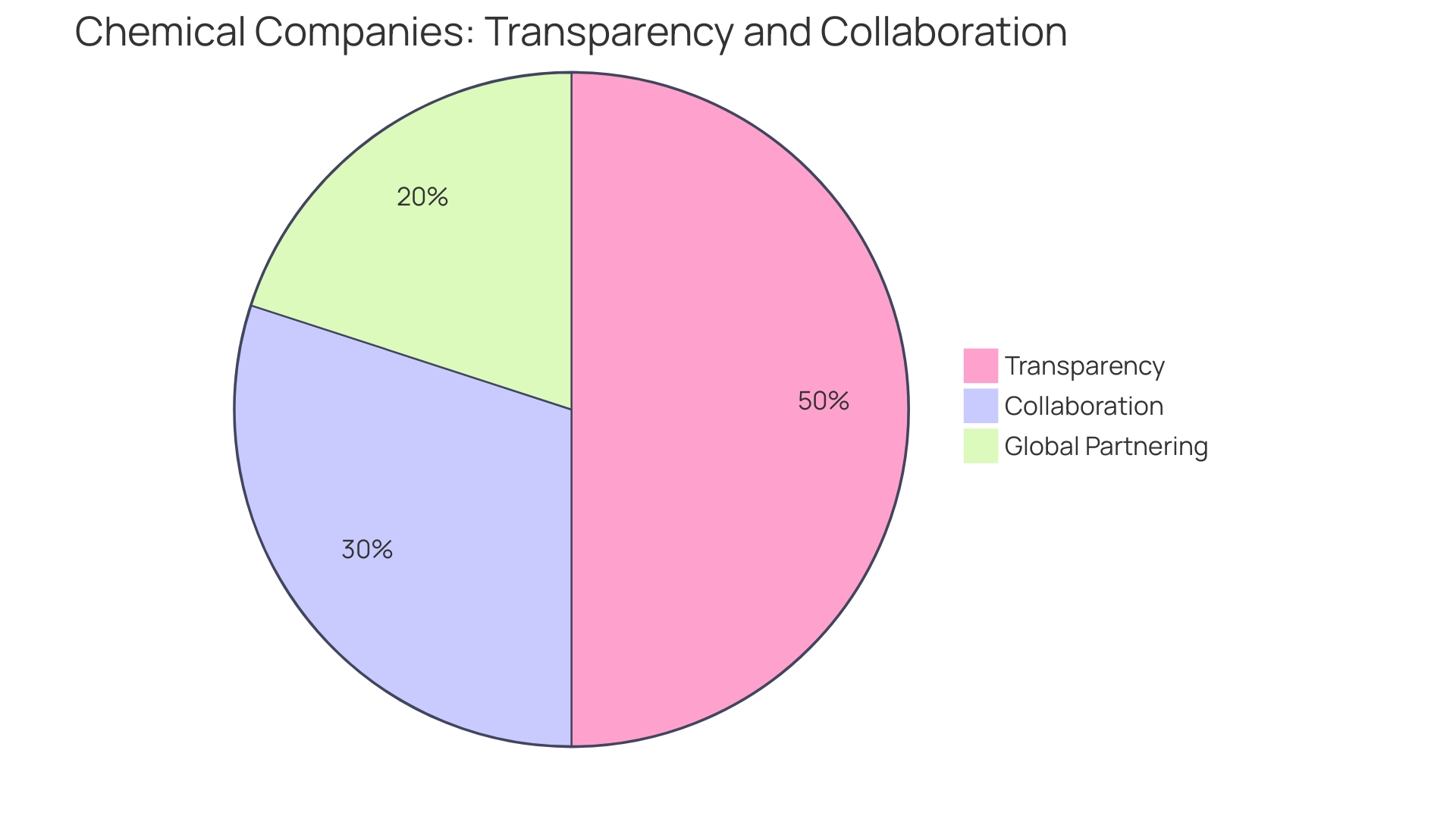Introduction
Naphtha, a versatile and flammable liquid hydrocarbon mixture derived from crude oil, plays a crucial role in various industries. Its chemical composition consists of aliphatic hydrocarbons, paraffins, naphthenes, and aromatics, making it a valuable solvent and petrochemical feedstock. The properties of naphtha, including its boiling range, flammability, and solvency power, make it indispensable in sectors such as petrochemicals, water treatment, and energy production.
As the global push for decarbonization and environmental protection intensifies, naphtha's utilization is closely monitored and regulated. Market intelligence provided by companies like Argus aids in navigating the complex landscape of naphtha pricing and facilitates strategic planning in the industry. With its broad industrial applications and evolving role in technology and sustainability, naphtha continues to be a subject of interest and innovation in the chemical engineering field.
Chemical Composition and Structure of Naphtha
Consisting mainly of aliphatic hydrocarbons, a volatile and flammable liquid hydrocarbon mixture arises as a result of the distillation of crude oil. Its chemical profile boasts a variety of compounds, including but not limited to paraffins, naphthenes, and aromatics. The exact mixture and characteristics of the substance are affected by its origin and the complexities of the refining procedure. This dynamic nature of naphtha underscores its versatility in various applications, particularly as a solvent and a petrochemical feedstock.
In the realm of energy and environmental considerations, companies like Coolbrook have gained recognition, notably being named Tech Champion 2022 in the Manufacturing category by The Financial Times, for their innovative efforts to decarbonize heavy industrial areas, such as petrochemicals. Their innovative rotating technology, which combines insights from space science, turbomachinery, and engineering, aims to replace the combustion of fossil fuels. This technology not only promises to achieve high temperatures up to 1700°C but also holds the potential to substantially reduce CO2 emissions by 2.4 billion tons annually, equating to a 30% decrease in the heavy industry sector.
The urgency to mitigate greenhouse gas emissions and tackle global warming is echoed in the policies and regulatory measures being adopted worldwide. Significantly, the 'Bonn Declaration' signed by ministers and organizational leaders commits to immediate and ambitious action to tackle the global challenges related to chemicals. Meanwhile, in the EU, the revision of the Reach legislation, a cornerstone of substance regulation, has experienced delays, postponing the advancement of environmental protection measures.
In the face of these regulatory challenges, Argus offers essential market insights with over 50 years of data gathering, providing more than 25,000 price evaluations for important commodity areas. These prices serve as trusted benchmarks, facilitating transparency in physical supply and derivative contracts, tax assessments, risk management, and strategic planning. Argus's transparent methodologies and benchmarks are widely recognized as accurate indicators of commodity value, ensuring compliance with international standards like Iosco's PRA Principles.
Properties of Naphtha
Naphtha is a significant player in the industrial landscape due to its distinctive properties. As a volatile hydrocarbon mixture, it boasts a boiling range from 30 to 200 degrees Celsius, rendering it a versatile solvent for various applications. Its high flammability and capacity to form explosive mixtures with air necessitate careful handling, yet its low viscosity simplifies transport and manipulation. Naphtha's solvency power is particularly noteworthy, as it is capable of dissolving a diverse array of substances, making it indispensable in sectors such as petrochemicals, where it is used to produce plastics, synthetic fibers, and rubber.
The importance of a specific type of fuel extends to its role in meeting strict environmental standards, as observed in Optimotion's use of IoT technologies to monitor and optimize the usage of substances in water treatment procedures. Such innovation highlights the significance of a specific petroleum product in achieving compliance with government regulations and enhancing operational efficiency.
In the context of engineering, naphtha's characteristics align well with industry-wide efforts to tackle complex challenges. As emphasized by industry experts, the application of fundamental engineering principles is crucial in maximizing process efficiency, reducing costs, and minimizing environmental impacts. This is apparent in the pursuit of varied research strategies to develop technologies that can transform crude oil to substances, customized to different crude types and product slates, as mentioned by Ibrahim A. Abba, chief technologist for the Chemicals Research and Development Division.
Furthermore, progress in technology, like Coolbrook's rotating technology, which seeks to reduce carbon emissions in major industrial sectors by attaining high temperatures without using fossil fuels, could additionally impact the usage of a certain petroleum-derived product and its impact on the environment. This underscores the broader industry trend toward increased transparency and collaboration, where stakeholders demand responsible and sustainable practices, as well as detailed information about product origins and associated emissions.
To summarize, the attributes of the substance not only enable various industrial uses but also contribute to the advancement of technology and sustainability in the field of chemical engineering. Its role is evolving in tandem with industry demands for greater efficiency and reduced ecological impact, making it a subject of continued interest and innovation.
Types of Naphtha
Naphtha, a vital hydrocarbon mixture, is classified into types based on its boiling point range, with each serving specific roles in various industrial processes. The lower boiling point of light petroleum makes it ideal for petrochemical applications, like steam cracking, where it is converted into olefins and aromatics—important components for plastics, synthetic rubbers, and other substances. This process is crucial as it resonates with the innovative efforts by companies like Coolbrook, which was recognized by The Financial Times for their groundbreaking work in reducing industrial CO2 emissions. Conversely, the extended range of boiling points of heavy naphtha makes it suitable for use as a cleaning and degreasing agent in industry, meeting the strict fire safety requirements imposed by modern transportation technologies, as stated by ABICHAMA in their engagements related to fire safety in Brazil. Furthermore, with the evolving global demand for energy and materials, engineers specializing in chemistry, like the ones mentioned in the journal Nature Chemical Engineering, persist in creating and enhancing procedures to address the efficiency and sustainability demands. This underscores the essential contribution of a specific petroleum product in the broader scope of engineering and energy markets.

Industrial Uses of Naphtha
Naphtha's versatile chemical properties are the cornerstone of its broad applicability across various sectors. As an essential feedstock in petrochemical processes, the substance is crucial for producing key compounds like ethylene and propylene, which are vital for a wide range of products from antifreeze to food packaging. The significance of ethylene, the most extensively produced petrochemical, is underscored by its utility in crafting items that are lightweight, durable, or waterproof. However, ethylene production is traditionally associated with substantial greenhouse gas emissions, prompting a push for innovative practices that mitigate environmental impact.
In addition to feedstock uses, a particular type of petroleum product serves as a solvent, playing a pivotal role in the formulation of paints, coatings, and adhesives, contributing to the manufacturing of electronics, textiles, and building materials. Its application extends to fueling industrial furnaces and boilers, signifying its versatility as a source of energy. Moreover, naphtha's contribution to gasoline and other fuels is crucial, reflecting its integral position in transportation. The exploration of new technologies in the conversion of crude oil to substances showcases the industry's dedication to enhancing processes and lowering carbon footprints, as expressed by experts such as Ibrahim A. Abba, who advocates for diversification through various research strategies. This multifaceted approach aligns with the global push towards decarbonization, such as efforts by companies like Coolbrook, lauded as Tech Champion 2022, for their ground-breaking technologies that aim to revolutionize industrial sectors by curtailing carbon emissions significantly.

Naphtha as a Feedstock for Petrochemicals
Naphtha's role as a key feedstock in petrochemical production is pivotal, particularly in processes like steam cracking and catalytic reforming. During steam cracking, a specific type of hydrocarbon undergoes thermal decomposition at elevated temperatures, breaking into smaller molecules such as ethylene and propylene—vital precursors for plastics, synthetic fibers, and a spectrum of other chemical products. Meanwhile, catalytic reforming transforms naphtha into high-octane components for gasoline by molecular rearrangement, enhancing fuel quality.
The demand for petrochemicals, primarily driven by plastics and fertilizers, is expected to surge, with the International Energy Agency (IEA) projecting that they will account for over two-thirds of the global oil demand growth through 2026. This trend underscores the dual utility of fossil fuels—not only as an energy source but also as a critical ingredient in manufacturing. Despite the pressing climate concerns associated with fossil fuels, their use in petrochemicals presents a growing challenge. Innovations in thermal and catalytic conversion technologies are essential, as they provide a suite of options to adapt to different crude types and product demands, offering a diversified and strategic approach to future chemical engineering challenges.

Naphtha in Steam Cracking and Catalytic Reforming
Naphtha plays a pivotal role in the petrochemical industry, serving as the bedrock for processes like steam cracking and catalytic reforming, which create a plethora of valuable products. Within the high-temperature environment of a steam cracker, a particular substance encounters temperatures soaring between 850 to 950 degrees Celsius. This intense heat breaks down the hydrocarbon chains, resulting in the production of ethylene, propylene, and a range of other olefins. Changing course, catalytic reforming utilizes a catalyst to intricately rearrange the molecular structure of a petroleum fraction, thereby producing high-octane gasoline components.
The importance of these processes cannot be overstated, as they are integral not only to producing energy sources but also to crafting materials that permeate our daily lives. For instance, the olefins derived from naphtha are crucial precursors for plastics, which play a dual role in our society by both minimizing food waste through improved packaging and ensuring the sterility of medical instruments. Despite the environmental challenges posed by plastics, the advancements in chemical recycling and the development of new polymers underscore the petrochemical industry's commitment to innovation and sustainability.
Considering the global power landscape, specialists underscore the significance of adapting to the evolving market dynamics and embracing renewable alternatives. This shift is evident in the ambitious aims of major oil corporations like BP Inc., which is steering towards a net-zero future by curtailing oil and gas production. At the same time, the transition towards alternative sources of power is gaining traction in areas such as shipping, which is facing the need to decrease its dependence on hydrocarbon fuel as a result of strict emission rules. While the nuclear field gains attention for its low-volume yet high-power waste, the burgeoning Indian green power market is attracting substantial investment, heralding a new epoch of renewable prominence.
In this intricate network of power generation and ecological management, the function of petroleum distillate is diverse—powering industrial giants, facilitating the production of high-quality fuel, and acting as a foundation for the creation of everyday materials. As the energy sector navigates through geopolitical tensions and market fluctuations, especially in crucial regions like the Middle East, North and West Africa, the versatility and utility of a petroleum distillate remain integral to both traditional and innovative energy pathways.
Safety and Environmental Considerations
Understanding the intricacies of the flammability and environmental effects of this substance necessitates a comprehensive approach. As a highly combustible solvent, it is critical to adhere to stringent safety protocols during storage and handling to avert potential hazards. For instance, understanding the product's hazard classification through Safety Data Sheets (SDS) is a fundamental step in mitigating risks. Engagement with manufacturers or previous offerors for confirmation on safety measures is also advisable, especially for entities responsible for the transportation of such materials. These pre-emptive actions are vital in preventing accidents and ensuring compliance with dangerous goods shipping requirements, including necessary training.
Air pollution is another significant consideration with naphtha usage due to its emission of volatile organic compounds (VOCs). To address this, containment and emission control strategies must be effectively employed. The life-cycle impact of solvent usage, as explored in educational initiatives like the case study at Waubonsee Community College, highlights the importance of comprehensive understanding in environmental stewardship. This project, which relied on research utilizing the Greenhouse Gases, Regulated Emissions, and Energy Use in Technologies (GREET) model, offered students from various academic disciplines a glimpse into the environmental consequences of solvent use, illustrating the educational importance of comprehending the wider effects of these substances.
Moreover, the exploration of different research approaches, like those spearheaded by principal scientist Ibrahim A. Abba, demonstrates the industry's dedication to expanding technology choices for transforming crude oil into substances. This approach not only caters to different crude types and product slates but also considers varying capital intensities and timelines, reinforcing the need for a versatile and forward-thinking approach to chemical research and development.
In light of the growing petrochemical demand and consequential greenhouse gas emissions, it is imperative to consider the downstream effects of policy changes, focusing on material reuse and the reduction of single-use production. As emphasized by the award-winning digital channel Inside Energy, fresh insights into energy and technology are crucial for powering our lives responsibly. With the manufacturing field's advancements, such as Coolbrook's rotating technology aiming to decarbonize heavy industries, the potential for significant reductions in CO2 emissions is on the horizon, marking a pivotal step towards sustainable industrial practices.
Comparisons with Other Solvents and Fuels
Naphtha stands out for its volatility and solvency capabilities, essential factors for various industrial applications. With a lower boiling range than heavier fuels like diesel or kerosene, the volatility of this substance enhances its effectiveness as a quick-drying solvent. Its robust solvency power allows it to dissolve diverse substances, a trait beneficial in multiple sectors ranging from petrochemicals to industrial cleaning. While the high flammability of a certain substance raises safety considerations, its environmental footprint is also noteworthy, prompting industries to evaluate its use carefully against regulatory standards and sustainability goals. The cost of a certain petroleum product is greatly affected by market dynamics, where various factors including supply, demand, and refining intricacies can lead to changes in prices. The insights from the Argus Blog underscore the importance of transparency and accurate valuation in the fuel market, which are crucial for strategic planning and analysis in sectors reliant on solvents like naphtha.
Conclusion
In conclusion, naphtha is a versatile and valuable liquid hydrocarbon mixture with various industrial applications. Its chemical composition, including aliphatic hydrocarbons, paraffins, naphthenes, and aromatics, makes it a valuable solvent and petrochemical feedstock. Naphtha's properties, such as boiling range, flammability, and solvency power, contribute to its indispensability in sectors like petrochemicals, water treatment, and energy production.
As the global push for decarbonization and environmental protection intensifies, naphtha's utilization is closely monitored and regulated. Market intelligence provided by companies like Argus aids in navigating the complex landscape of naphtha pricing and facilitates strategic planning in the industry. This market intelligence ensures compliance with international standards and fosters transparency in supply and derivative contracts, tax assessments, risk management, and strategic decision-making.
Naphtha's relevance extends beyond its industrial applications. It plays a crucial role in meeting stringent environmental standards and contributing to sustainability efforts. Innovations in technology, such as Coolbrook's rotating technology, aim to decarbonize major industrial sectors by achieving high temperatures without burning fossil fuels.
This highlights the industry's commitment to reducing environmental impact and embracing responsible and sustainable practices.
In the field of chemical engineering, naphtha's characteristics align well with the industry's efforts to tackle complex challenges. Its unique properties contribute to maximizing process efficiency, reducing costs, and minimizing environmental impacts. The pursuit of diversified research strategies to develop technologies that convert crude oil to chemicals demonstrates the industry's commitment to efficiency and sustainability.
Overall, naphtha's versatility, utility, and evolving role in technology and sustainability make it a subject of continued interest and innovation in the chemical engineering field. By embracing transparency, collaboration, and responsible practices, stakeholders in the renewable fuels industry can contribute to a more sustainable future.




